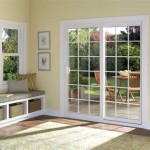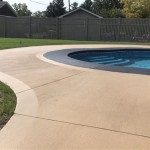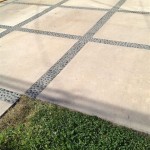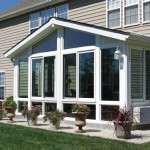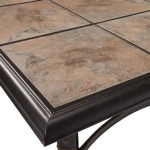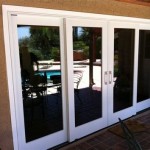The article must use only one image related to the topic. The image must be used in the introduction after the first paragraph. The image must have an alt text.
Sliding Patio Door Lock Not Working: Troubleshooting and Solutions
A sliding patio door offers convenient access to outdoor spaces and provides an abundance of natural light. However, a malfunctioning lock can compromise security and create a frustrating situation. Understanding the common causes of a sliding patio door lock failure and knowing how to diagnose and resolve these issues is crucial for maintaining the integrity of the home.

This article will explore various reasons why a sliding patio door lock might not be working correctly, providing a comprehensive guide to troubleshooting and implementing effective solutions. It will delve into mechanical problems, alignment issues, and general maintenance practices that can prevent lock malfunctions and ensure the long-term security of the door.
Identifying Common Causes of Lock Failure
Several factors can contribute to a sliding patio door lock’s inability to function as intended. These can range from physical damage to the locking mechanism itself to external elements affecting the door's alignment. A systematic approach to identifying the root cause is the first step in implementing an appropriate solution.
One of the most frequent issues is a build-up of debris within the locking mechanism. Dust, dirt, insects, and other particles can accumulate over time, hindering the smooth operation of the lock's internal components. This accumulation can prevent the bolt from fully extending or retracting, rendering the lock ineffective.
Another common problem is misalignment of the door and the frame. If the door is not properly aligned, the locking bolt may not be able to engage correctly with the strike plate (the receiver on the door frame). This misalignment can be caused by settling of the house, warping of the door or frame due to temperature fluctuations or moisture, or physical impact that shifts the door’s position within the track.
Wear and tear on the lock mechanism itself is also a significant contributor to lock failures. Over time, the internal components of the lock, such as springs, levers, and the locking bolt, can weaken or break down due to repeated use. This is especially true for older or lower-quality locks.
Finally, physical damage to the lock, such as bending or breaking of the locking bolt or strike plate, can prevent the lock from functioning correctly. This type of damage can be caused by forced entry attempts, accidental impacts, or simply the application of excessive force when trying to lock or unlock the door.
Troubleshooting Steps for a Malfunctioning Lock
When a sliding patio door lock fails, a series of systematic troubleshooting steps should be followed to identify the cause of the problem. This methodical approach will help determine the necessary repair or replacement strategies.
The first step is a visual inspection of the entire locking mechanism, including the bolt, strike plate, and surrounding area. Look for any obvious signs of damage, such as bent or broken parts, loose screws, or excessive wear. Clean the lock and surrounding area with a brush or vacuum to remove any visible debris.
Next, attempt to operate the lock manually. Try sliding the bolt back and forth with your fingers, and observe whether it moves smoothly and engages correctly with the strike plate. If the bolt feels stiff or catches on anything, this may indicate a problem with the internal mechanism that requires lubrication or further cleaning.
Check the alignment of the door by examining the gap between the door and the frame. The gap should be consistent along the entire length of the door. If the gap is uneven or non-existent in some areas, this suggests the door is misaligned. Use a level to determine if the door and frame are plumb and square.
Inspect the strike plate for proper alignment with the locking bolt. The strike plate should be securely attached to the door frame and positioned so that the locking bolt engages smoothly and fully. If the strike plate is loose, bent, or misaligned, it may need to be adjusted or replaced. Loosen the screws holding the strike plate, move it slightly to align it with the bolt, and then retighten the screws. If the screw holes are stripped, use longer screws or fill the holes with wood filler before re-inserting the screws.
If the lock continues to malfunction after these initial checks, further investigation may be necessary. This could involve disassembling the lock mechanism to inspect the internal components for damage or wear. However, this step should only be attempted by individuals with experience in repairing mechanical devices. If unsure, consult a qualified locksmith.
Implementing Solutions and Preventive Measures
Once the cause of the lock failure has been identified, appropriate solutions can be implemented to restore the door's security. These solutions may range from simple adjustments and lubrication to more complex repairs or replacements.
For issues caused by debris accumulation, cleaning the locking mechanism and surrounding area is often sufficient. Use a brush, vacuum, and a dry lubricant, such as graphite or Teflon spray, to remove dirt and grime and ensure smooth operation. Avoid using oil-based lubricants, as they can attract more dirt over time causing the problem to re-occur.
If misalignment is the problem, adjusting the door or the strike plate will be necessary. For minor misalignments, loosening the screws holding the strike plate and repositioning it slightly can often resolve the issue. For more severe misalignments, adjusting the rollers at the bottom of the door may be required. These rollers are typically adjustable and can be used to raise or lower the door, improving its alignment with the frame and the strike plate. Consult the door manufacturer's instructions or seek professional assistance if unsure how to adjust the rollers.
If the lock mechanism is damaged or worn, replacement is usually the best option. Purchase a new lock that is compatible with the existing door and frame. Follow the manufacturer's instructions carefully when installing the new lock. If unfamiliar with this type of repair, consider hiring a locksmith to ensure proper installation.
Preventive measures can help extend the life of the sliding patio door lock and prevent future malfunctions. Regularly clean and lubricate the locking mechanism, as described above. Inspect the door alignment periodically and make adjustments as needed. Avoid slamming the door or applying excessive force when locking or unlocking it. Consider adding supplementary security devices, such as a security bar or a secondary lock, to provide an extra layer of protection. A security bar placed in the track can prevent the door from being opened even if the primary lock fails.
By following these troubleshooting steps and implementing appropriate solutions, homeowners can effectively address a malfunctioning sliding patio door lock and ensure the security of their homes. Regular maintenance and preventative measures can further minimize the risk of future lock failures, providing lasting peace of mind.
Specific lubricant applications are better than others. A silicone-based lubricant is suitable for most sliding door parts. Some lubricants contain additives that may harm the door’s finish, so check the product label before applying it.
When purchasing a replacement lock, consider the security rating. Higher-rated locks offer greater resistance to forced entry. Consult with a locksmith or security professional for recommendations on the most suitable lock for the specific door and security needs.
If the sliding patio door is old or outdated, consider replacing it with a newer model that incorporates enhanced security features. Modern sliding doors often include multi-point locking systems, reinforced frames, and shatter-resistant glass, providing a higher level of security compared to older doors.
In cases where the door frame is damaged or warped, repairing or replacing the frame may be necessary to ensure the proper functioning of the lock. A damaged frame can prevent the locking bolt from engaging correctly, even if the lock itself is in good working order. Frame repairs may involve filling cracks or gaps with wood filler, reinforcing weak areas with metal brackets, or replacing entire sections of the frame. A professional carpenter or contractor can provide expert assistance with frame repairs.
Finally, educating everyone in the household about the proper use and maintenance of the sliding patio door lock can help prevent accidental damage or misuse. Ensure that everyone understands how to lock and unlock the door correctly and that they are aware of the importance of keeping the locking mechanism clean and well-maintained.

My Patio Door Won T Lock What Do You

Sliding Patio Glass Door Not Locking Diy Fix Youtube
Glass Door Latch Replacement Ifixit Repair Guide

How To Fix Sliding Door Lock Bunnings Workshop Community

Solving Common Sliding Glass Door Lock Problems Fs Blog

Sliding Door Doesn T Lock How To Fix It Easily Youtube

Broken Aw Sliding Glass Door Lock Latch Swisco Com

Window Locks And Patio Door Bolts Lock Repairs Doctor Perth

How To Open A Fuhr Sliding Door That Is Stuck

Sliding Patio Glass Door Not Locking Diy Fix Youtube

